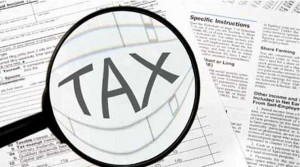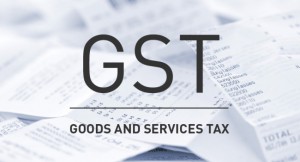In this blog post, Dhiren Sehgal, a recent graduate of Jindal Global Law School and currently a student of the Diploma in Entrepreneurship Administration and Business Laws course by National University of Juridical Sciences (NUJS), Kolkata and iPleaders, analyzes the GST bill introduced by the Government. The post explores the benefits of the tax with regards to the different taxation policies of the country.
The Current Problem
The Hundred and Twenty-Second Constitutional Amendment Bill, 2014, aims to amend the Indian Constitution to inculcate and facilitate the introduction of Goods and Services Tax (GST) in India. This constitutional amendment will enable both the parliament and the state legislatures to constitute laws about levying of GST on the supply of goods and services in the same transaction.
If we look at the current situation, our constitution provides for distinguishable taxes to be imposed separately by the Centre and the states. The scheme of Value Added Tax (VAT) was introduced for central excise duty in the year 1986, initially as MODVAT and eventually as CENVAT. Before VAT, Excise duty was being levied on both the inputs being used to produce the output and on the output produced itself, which meant a tax on tax, i.e., an amount which was being paid as a tax was subject to taxation again at the output level. This tax on tax meant that there existed a cascading effect of taxes.
This issue was sought to be resolved by the VAT regime. Eventually, the issue was tackled by the VAT regime. However, there existed certain complexities and inconsistencies in the VAT regime. Certain sectors were exempted from the VAT regime, such as – real estate, oil and gas production, etc., not only this but certain goods and services were taxed differently, therefore making the VAT regime a much more complex structure than envisaged. Also in the existing VAT regime the credit for excise duty and service tax paid at the manufacturing stage isn’t available to the traders when they pay the VAT or sales tax at the state level; also no credit of taxes paid in one state is available in other states. These problems have led to an artificial inflation of prices of goods and services.
Why GST?
 By introducing the amendment bill, proposing the introduction of GST, which will do away with the complexities and bring the diverse taxation structure and will club and harmonise the indirect taxation structure of the country. GST will ensure and is expected to reduce the cost of production and is also challenging to bring down inflation in the economy. GST will also ensure zero cascading effect of taxes by charging GST only on the components of value addition at every stage. Therefore, the credit being paid as GST on inputs at every stage where the value is being added would be discharged as a liability on the output produced, in this way GST won’t have the ‘tax on tax’ effect its predecessors had.
By introducing the amendment bill, proposing the introduction of GST, which will do away with the complexities and bring the diverse taxation structure and will club and harmonise the indirect taxation structure of the country. GST will ensure and is expected to reduce the cost of production and is also challenging to bring down inflation in the economy. GST will also ensure zero cascading effect of taxes by charging GST only on the components of value addition at every stage. Therefore, the credit being paid as GST on inputs at every stage where the value is being added would be discharged as a liability on the output produced, in this way GST won’t have the ‘tax on tax’ effect its predecessors had.
What the GST bill has to offer:
- Dual nature – GST will be levied simultaneously by both the Centre and the states, this characteristic of the GST regime is known as dual GST. The Centre would levy and also collect what would be referred to as the central goods and services tax (CGST) and the states would levy the state goods and services tax (SGST) upon transactions within a state.
- Integrated Goods and Services Tax (IGST) – For levying and collection of taxes on inter-state transactions, the integrated goods, and services tax (IGST) has been incorporated, and this integrated mechanism has been constituted for an obstruction free and seamless inter-state transactions. In this scenario, the seller would be paying the IGST on the sale to the central government after accommodating the credit due on IGST, CGST, and SGST on the purchases. In this case, the state exporting the goods will pay the Centre the credit of SGST which has been used in the payment of IGST. The person importing the goods and services will claim the credit of IGST while doing away of his tax liability which will be inclusive of both CGST and SGST in the output produced. The Centre will transfer the credit of IGST used in the payment of SGST to balance out things.
- All SGST collected will be accrued to the state where the goods and services will be consumed.
- The central taxes which will be clubbed under the GST regime are as follows – central excise duty, additional excise duty, excise duty levied under Medicinal and Toiletries Preparation Act, Service Tax, Additional Customs Duty, commonly known as Countervailing Duty (CVD), Special Additional Duty of Customs-4% (SAD), Cesses and surcharges.
- State level taxes which will be subsumed under GST will be – VAT/Sales Tax, Central Sales Tax (levied by the Centre and collected by the States), entertainment tax, Octroi and entry based taxes, purchase tax, luxury tax, taxes on lottery, gambling and betting, State cesses and surcharges.
- Exemptions – Alcohol and liquor for human consumption have been exempted under the GST regime. Although petroleum and its products have been included under the term ‘goods’ under GST, still it has been provided that petroleum and its products will not be subject to the levying of GST until notified. The present set of taxes which are being levied by the states and the Centre on petroleum and its products i.e. the sales tax/vat and CST will be levied by the states and the excise duty by the Centre. The Centre will impose taxes on tobacco and tobacco products over and above GST.
- Setting up a goods and services tax network (GSTN) – a non-profit and a non-government entity/company shall be set up called GSTN, shall be jointly set up by the central and state governments and will contribute shared it infrastructure and services to the union and state governments, taxpayers and various stakeholders.
- Compensation of GST – this compensatory measure has been introduced so as to compensate for the loss incurred in the tax revenues and aid them in the transition to this taxation regime. The centre has agreed to compensate all losses incurred by the states during this transition phase for 5 years. This is there under clause 19 of the (122nd) constitutional amendment bill, 2014. This compensation will be provided on the recommendation from the GST council.
- GST Council – Under the Indian constitution, a GST Council will be formulated which will be a collaboration between the Centre and the states. The council will be chaired by the Union finance minister and also shall have the state finance/taxation ministers nominated by each state and union territories as members of the GST Council. The council is supposed to advise and give recommendations to the Centre and the states on issues such as the tax rates, limits on taxes and exemption to be made. Half of the total members to the council will be deemed as a quorum of the GST Council. Each and every decision made by the council shall be taken by a majority of at least three-fourths of the votes of the members present and shall be done in accordance with the following principles:
- The central government’s vote shall account for one-third of the total votes cast.
- The state governments votes taken together shall account for two-thirds of the total votes cast in the quorum meeting[1].
[divider]
Footnote:
[1] Sources: http://dor.gov.in/Gstintro; http://www.prsindia.org/uploads/media/Constitution%20122nd/Brief–%20GST,%202014.pdf. aa
 Serato DJ Crack 2025Serato DJ PRO Crack
Serato DJ Crack 2025Serato DJ PRO Crack










 Allow notifications
Allow notifications



